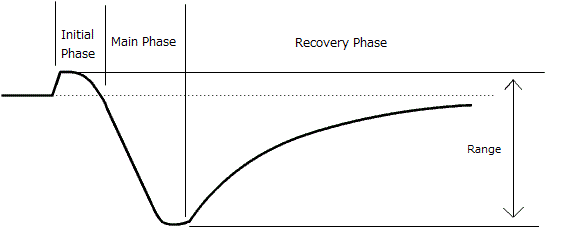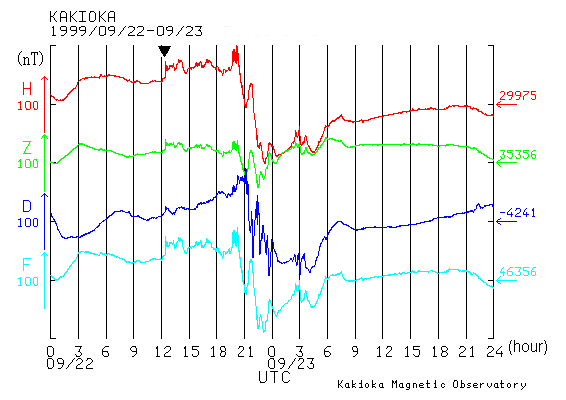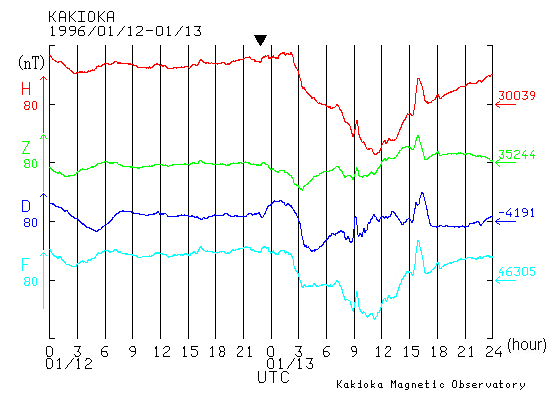Pronounced geomagnetic disturbances, such as observed when energetic particles ejected by a large explosion on the solar surface reach the Earth, are called geomagnetic storm.
The unit of geomagnetic field monitoring is nT (nanoteslas). The average magnitude of geomagnetic horizontal force (H) around Japan is approximately 30,000 nT, and the amplitude of the daily variation is around 50 nT during quiet times. During geomagnetic storms, H may change by as large as 50 to several hundred nT.
(Data on previous major magnetic storms:Kakioka, Memambetsu, Kanoya)
While geomagnetic storms represent global phenomena, related variations depend on latitude and longitude. At low magnetic latitudes, magnetic storms in Japan often start with a sudden increase in horizontal force (H), known as storm sudden commencement (SSC).
This is the beginning of the initial phase, during which enhanced H values are observed for several hours. In the subsequent main phase, H decreases rapidly to a minimum and then returns to its original level in the recovery phase.
Geomagnetic storms that follow this process are called sudden-commencement type magnetic storms. Some geomagnetic storms that are not characterized by a clear initial phase, are defined as gradual-commencement types.

Typical morphology of sudden-commencement type magnetic storms (horizontal force variation)
Geomagnetic storm criteria are based on the shapes and magnitudes of observed disturbances as follows:
(*) The range of H is based on variations associated with the predominance of equatorial ring currents in geomagnetic storms, with quiet-day variations and those obviously caused by other phenomena excluded.
(*) Classification of A, B and C for the rapid onset part (SSC) of geomagnetic storms.

−Sudden-commencement geomagnetic storm−

−Gradual-commencement geomagnetic storm−
Copyright (c) Kakioka Magnetic Observatory, Japan Meteorological Agency. All rights reserved.
